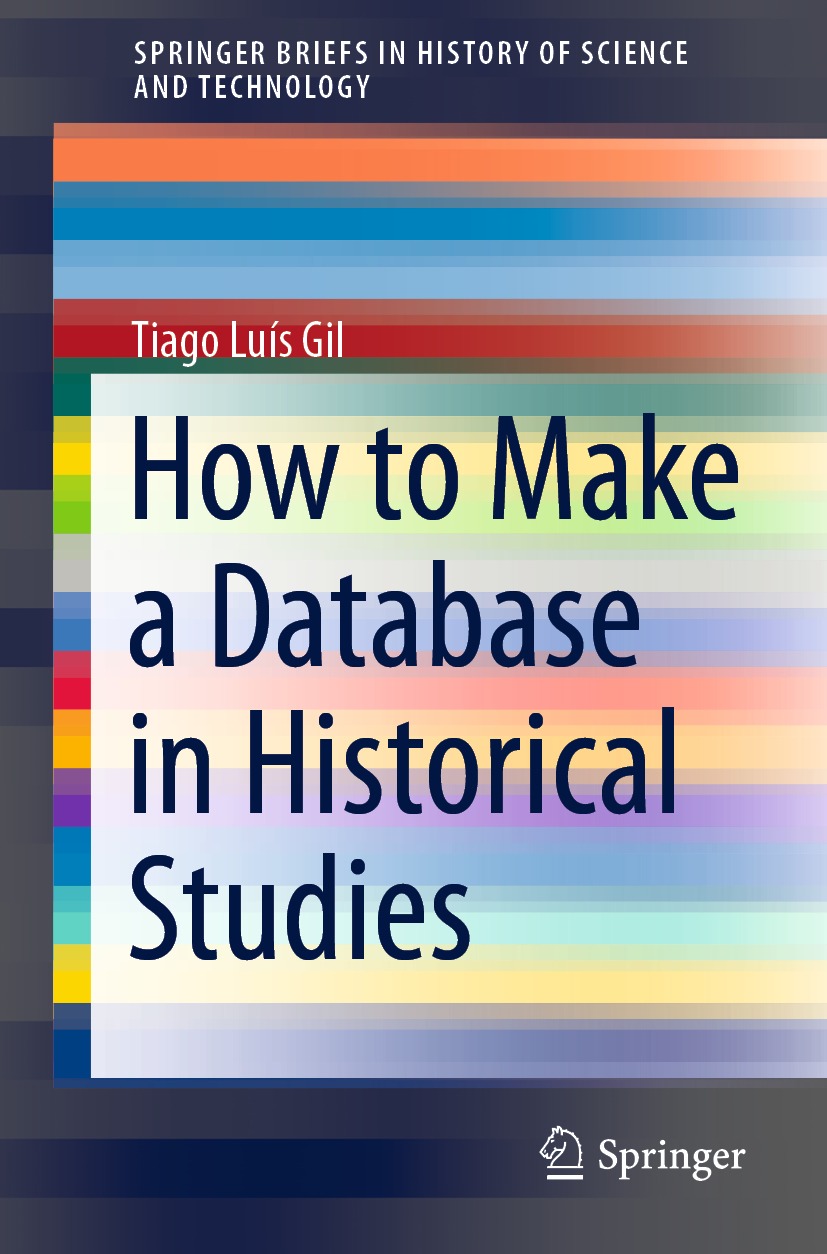Tiago Luís Gil - How to Make a Database in Historical Studies
Here you can read online Tiago Luís Gil - How to Make a Database in Historical Studies full text of the book (entire story) in english for free. Download pdf and epub, get meaning, cover and reviews about this ebook. year: 2021, publisher: Springer International Publishing, genre: Romance novel. Description of the work, (preface) as well as reviews are available. Best literature library LitArk.com created for fans of good reading and offers a wide selection of genres:
Romance novel
Science fiction
Adventure
Detective
Science
History
Home and family
Prose
Art
Politics
Computer
Non-fiction
Religion
Business
Children
Humor
Choose a favorite category and find really read worthwhile books. Enjoy immersion in the world of imagination, feel the emotions of the characters or learn something new for yourself, make an fascinating discovery.
- Book:How to Make a Database in Historical Studies
- Author:
- Publisher:Springer International Publishing
- Genre:
- Year:2021
- Rating:5 / 5
- Favourites:Add to favourites
- Your mark:
- 100
- 1
- 2
- 3
- 4
- 5
How to Make a Database in Historical Studies: summary, description and annotation
We offer to read an annotation, description, summary or preface (depends on what the author of the book "How to Make a Database in Historical Studies" wrote himself). If you haven't found the necessary information about the book — write in the comments, we will try to find it.
How to Make a Database in Historical Studies — read online for free the complete book (whole text) full work
Below is the text of the book, divided by pages. System saving the place of the last page read, allows you to conveniently read the book "How to Make a Database in Historical Studies" online for free, without having to search again every time where you left off. Put a bookmark, and you can go to the page where you finished reading at any time.
Font size:
Interval:
Bookmark:

More information about this series at http://www.springer.com/series/10085

Translation from the Portuguese language edition: Como se faz um banco de dados (em Histria) by Tiago Lus Gil, Tiago Gil 2015. Published by Ladeira Livros, Porto Alegre, Brazil. All Rights Reserved.
This Springer imprint is published by the registered company Springer Nature Switzerland AG
The registered company address is: Gewerbestrasse 11, 6330 Cham, Switzerland
The registered company address is: Gewerbestrasse 11, 6330 Cham, Switzerland
This book was written for history students or for anyone creating a database using digital tools from the very beginning. This book is not a technical manual. This book will introduce the reader to various databases and information technology resources that can enhance historical research. The goal is to help the reader automatize their research by employing some exciting applications from social sciences. From the beginning of the research, we can do this from the proposal of the problem to the writing, collection, analysis, and writing included in the planning. The focus, however, will be on the way the material is conceived and organized.
Writing a book like this has its problems. If it was too reliant on current technologies, the information in this book would be outdated in a few years. For this reason, I tried to write keeping timeless issues in mind, based on classical works of historians. I have researched the primary debates about the relationship between history and digital tools in the last 50 years. These debates present some chronic problems in historical data organization. As a firm believer in planning, I tried to write a text which would stand the test of time. We shall see that it is necessary to do the same thing with databases.
One of the significant issues facing a text like this is that digital humanities can often rely on specific software that, while popular and accessible at the time of publication, can easily be replaced by other programs (better and not) that are not yet on the market. To minimize the built-in obsolescence, this text considers the most general features of database software, without referring to a particular package. I chose to shift our focus from a single platform because of the danger of obsolescence and because focusing on a software program can give the impression that building a database (or using social network analysis, for instance) only requires plugging our data into a program. This is not the case. In this book, I want to emphasize the role that our training as historians plays in creating databases; highlighting the skills we already have that can help us to create our databases.
The reader will note that I often use gastronomical metaphors related to the kitchen universe, not only because metaphors have a didactic purpose but also because I believe there are several similarities between creating a database and cooking a perfect meal. Take, for example, the following: the idea is not to create a completely mechanized system that does all the work for you. I am not proposing that we create a machine where we input milk, potatoes, butter, garlic, and salt, to have beautiful mashed potatoes as output. The idea is to be familiar with the working parts of a database to be able to find the computational equivalent of the midpoint between a simple craftsmans workin our gastronomical metaphor mashing the potatoes by handand a terrible machine that does everything without needing the guiding hand of the chef. Forks, knives, peelers, and multiprocessors can be useful. I propose an automated handicraft informed by the deliberate, judicious use of digital tools. Being the craftsmen that they are, the historians need to know-how to create their tools and know how to adapt them for new uses, the latter being a skill much used in history writing.
To the skeptical reader, who does not trust using digital tools to produce historical knowledge, I can promise you that this is a book about history. We will talk about specific research problems, working through how digital tools can be integrated from the start of our project when we formulate our research problem, to the end of our project when we present our findings in written form. To the reader who believes that databases are just a technical issue, remember that there are thousands of technically perfect databases but which are now obsolete and unusable because they can not account for new historical research questions and methods. There are databases made for specific uses but because of the narrow choices made when they were created, cannot be adapted to other purposes. Databases are directly related to our research questions or should be. It is necessary to plan them well, to make them more useful. The better they are planned, the longer they will be of use.
The construction of a database can eventually show our theoretical positions, even the hidden ones. When we are obliged to rationalize our research object to the point of it being able to fit inside a table, we need to expose our positions even more. There is no room for the argument that our theme is very complex (as if some themes were simple). It is necessary to know how to deal with complexity and we need to do this clearly so that even a computer can understand. We only get out of a machine what we put into it (Charle 1985).
Font size:
Interval:
Bookmark:
Similar books «How to Make a Database in Historical Studies»
Look at similar books to How to Make a Database in Historical Studies. We have selected literature similar in name and meaning in the hope of providing readers with more options to find new, interesting, not yet read works.
Discussion, reviews of the book How to Make a Database in Historical Studies and just readers' own opinions. Leave your comments, write what you think about the work, its meaning or the main characters. Specify what exactly you liked and what you didn't like, and why you think so.












